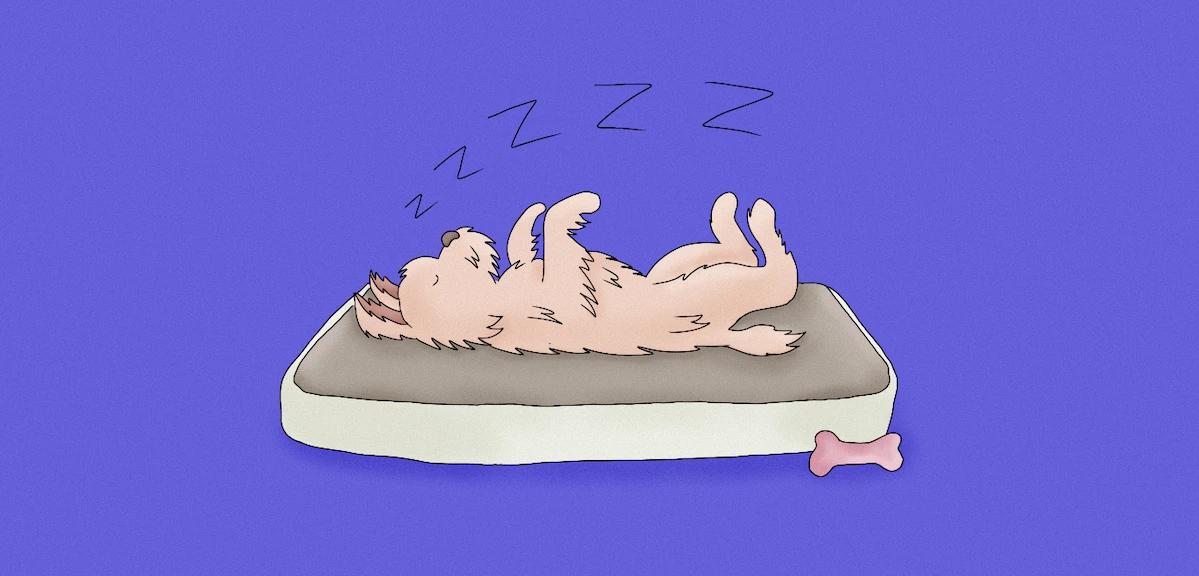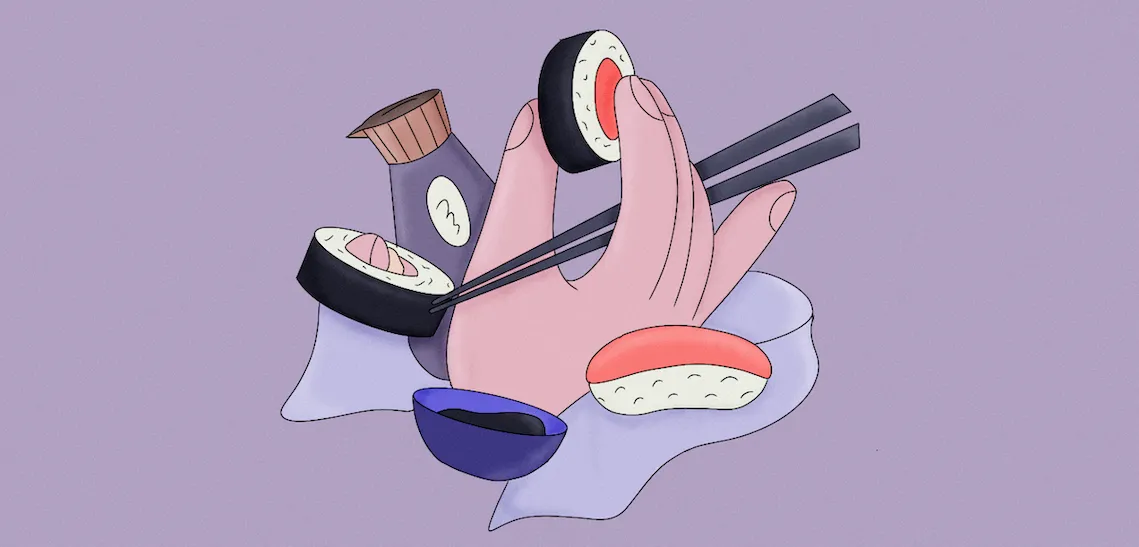
Denys Chumak
28 Aug 2023
How To Tell If Your Dog Is Dreaming?
Introduction
You know that look. The twitching paws, the muffled woofs, the flickering eyes behind those drooping lids. Your furry best friend is deep in dreamland, their mind wandering to who knows where. Have you ever wondered what exactly they're dreaming about? Whether they dream in black and white or in vivid colours like us?
We all know that our canine companions are more human than some people we know, so it only makes sense that they experience the same rich inner worlds we do each night. Join me as we explore the fascinating topic of whether dogs dream and peek into the sleeping mind of your beloved pet. The answers may just surprise you. Sweet dreams, pup!
How Do We Know if Dogs Dream?
Do dogs dream? Ever wonder what your dog is dreaming about when they twitch in their sleep? The truth is, we can't know for sure. But researchers believe that dogs do, in fact, dream. Do dog have dreams? Here are some of the signs that your puppy may be dreaming:
Paw movements:
If your dog's paws are moving or twitching while they're asleep, it's likely they're dreaming. Their paws may move like they're running, paddling, or chasing something. This indicates their mind is active and imagining movement.
Changes in breathing:
Your dog's breathing may become irregular or faster during dreams. They can even whimper, growl or make other sounds.
Eye movements:###
Your dog's eyes may move rapidly from side to side behind their eyelids like they're following the movement in their dream. Their eyes may also open partially at times.
Body movements:
Your dog may wag their tail, twitch their legs or even move their whole body during a dream. They can appear to be running, jumping or playing.
Barking or whimpering:
Some dogs will vocalise during dreams by barking, whimpering, growling or making other sounds. This shows their mind is active and responding to events in the dream.
While we can't know for sure what our dog dream about, it's clear that they do experience dreams. Take comfort in knowing that when your faithful friend is deep in dreamland, they're likely dreaming of you - their beloved owner and the centre of their world. How lucky are we to be such an important part of a dog's life that we occupy their thoughts even while they sleep?
What Do Dogs Dream About?
Your dog twitches, whimpers, and moves its paws while sleeping - it sure looks like they're dreaming. But what exactly do dogs dream about?
Scientists believe dogs dreams about their everyday experiences, just like humans. Their dreams likely replay events from their day, like going for a walk, playing with toys, or eating treats. Researchers have even monitored dogs' brain activity during sleep and found patterns similar to when they're awake and doing an activity they enjoy.
Dogs also probably dream about you - their favourite person! You feed them, play with them, give them belly rubs, and take them on adventures. You're their whole world, so you undoubtedly star in many of their dreams. They may dream about cuddling with you on the couch, chasing after you in the yard, or riding together in the car.
Of course, some dreams could be more abstract. Your dog may dream they can fly, run at superspeed, or have strange fantasy adventures where the normal rules of reality don't apply. These types of fantastical dreams have been observed in humans, so why not in our canine companions as well?
Can Dogs Have Nightmares?
Dogs definitely experience dreams, as evidenced by their twitching paws, soft woofs, and whimpers during sleep. But can they have nightmares too? It's certainly possible. As with humans, a dog's dreams can reflect their experiences, memories, and emotions—both good and bad.
Some signs your dog may be having a nightmare include:
Whimpering, crying or howling during sleep. Distressed vocalisations can indicate anxiety or fear.
Paddling legs or running in place. They may be trying to run away from something frightening in the dream.
Waking up suddenly and acting disturbed. A nightmare could be the culprit if your dog wakes up abruptly and seems upset.
Aggression or hiding. Some dogs may become aggressive for a few seconds after waking, or want to hide, if they are dreaming about something threatening.
Difficulty settling back to sleep. Nightmares can make it hard to fall back asleep due to the fear and anxiety they evoke. Your dog may need some extra reassurance and cuddling after a bad dream.
Acting clingy the next day. If your normally independent dog wants to stay close to you the day after a nightmare, it could be because they feel insecure or worried from their scary dream experience.
While the occasional nightmare is normal, frequent or intense nightmares could indicate an underlying anxiety issue, and it's best to talk to your vet. They may be able to determine if there are any triggers in the dog's environment or lifestyle that could be addressed.
Do Dogs Dream in Colour?
Do dogs experience dreams as humans do? While we can't know for sure if dogs dreams in colour or not, signs point to the possibility that they do dream in a similar way as us.
Body Movements and Noises
Have you ever watched your dog while they're sleeping and seen them make little noises, twitch their legs, or even bark softly? These types of behaviours are a strong indication that your dog is dreaming. Dogs go through similar sleep stages as humans, including rapid eye movement (REM) sleep. During REM sleep in both dogs and people, the brain is very active, but the muscles remain in a state of relaxation with occasional twitching.
Memory Consolidation
We know that human dreams often incorporate things we have experienced during the day as a way to process emotions and store memories. The same is likely true for dogs. Dreams provide dogs with an opportunity to consolidate memories from their day, including sights, sounds, smells, and interactions with people and other dogs. By dreaming about these experiences, dogs can better remember and learn from them.
Familiar Faces and Places
If dogs dreams about things they have recently perceived or experienced, it is probable that familiar people, animals, places, and events populate some of their dreams. Your dog may dream of chasing squirrels in the backyard, snuggling on the couch with you, or playing with a favourite toy. The mental images dogs conjure up during sleep and dreaming may very well be in colour, as a dog's vision and ability to perceive colour are similar to humans.
What Dog Dreams May Mean: A Look at Dream Analysis
As your dog snoozes the day away, do you ever wonder what's going on in that furry little head? Dogs experience sleep cycles similar to humans, including the rapid eye movement (REM) stage associated with dreaming. While we can't know for sure if dog dream, their brain activity during sleep indicates they likely do.
Analysing your dog's dreams could provide insight into their thoughts, feelings, and daily experiences. Dream symbols are personal and unique for each dog, but here are some possibilities to consider:
Chasing: This could reflect your dog's natural prey drive or a desire to play. It may mean they need more activity or playtime when awake.
Being chased: Your dog may feel anxiety, stress or insecurity in their waking life. Give them extra affection and reassurance.
Barking: Your dog may feel a need to communicate something or feel protective over their family or territory. Make sure their needs for social interaction, play, and security are being met.
Growling or aggression: This could indicate feelings of fear, anxiety or defensiveness in their waking life that needs to be addressed. Give your dog space if they seem irritable after waking, and be patient and gentle until they relax.
Eating or chewing on something: Your dog may have a strong appetite or really enjoy a toy or treat. Indulge them a bit with an extra snack, walk or play session.
Separation from family: Your dog likely feels very bonded to their family and pack. Give them extra love, attention and together time. Consider taking a day off work or scheduling a dog walker if you are away for long periods.
Unfamiliar locations or animals: Exposure to new sights and sounds in their daily life may make their way into your dog's dreams. Gently introduce your dog to new experiences while awake to build their confidence.
Conclusion
The bottom line is, while we can't know exactly what our dogs dream about, we have a pretty good idea it includes the people and activities that bring them the most joy in life. Sweet dreams, furry friends! Our dreaming dogs are just another reminder of the deep emotional lives our beloved pets experience.
There is a way to know for sure with the help of DreamApp. By monitoring their sleep patterns and movements, we can gain insights into their dream experiences, enhancing our understanding and connection with our beloved four-legged companions.
Frequently Asked Questions
Do dogs dream?
Yes, dogs do dream. Just like humans, they experience REM sleep, which is associated with dreaming. You may notice twitching, paw movements, or even soft barking during their dreams.
How can I tell if my dog is dreaming?
You can observe your dog's body movements during sleep. If you notice twitching, kicking, or rapid eye movements, it's likely that they are dreaming. Soft vocalisations are also a common sign.
What do dogs dream about?
While we can't know for certain, dogs likely dream about things they experience in their daily lives, such as chasing toys, running, or playing with other dogs. Their dreams may reflect their daily activities and desires.
Are all dog dreams pleasant?
Just like humans, dogs can have both pleasant and unpleasant dreams. Some dogs may have dreams that evoke fear or anxiety, which can lead to movements like whimpering or growling while they sleep.
Should I wake up my dog if they are dreaming?
It's generally best to avoid waking a dreaming dog, as they need uninterrupted sleep to fully benefit from the restorative effects. If their dream movements are causing concern, gently calling their name should suffice.
Did you have an unusual dream with this symbol?
Let's analyze this dream with our expert!
At least five words, please.

Your dreams are completely private
Take control of your dream emotions in the free mobile app



The most recent users' dreams
Go to the user dreams page
Dream App
Free dream interpretations

(1,213)











